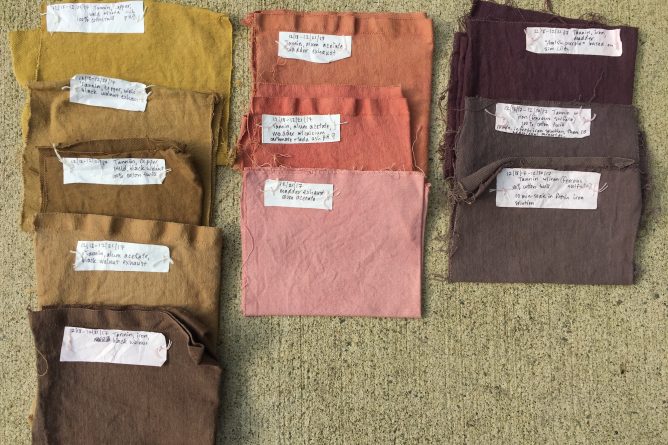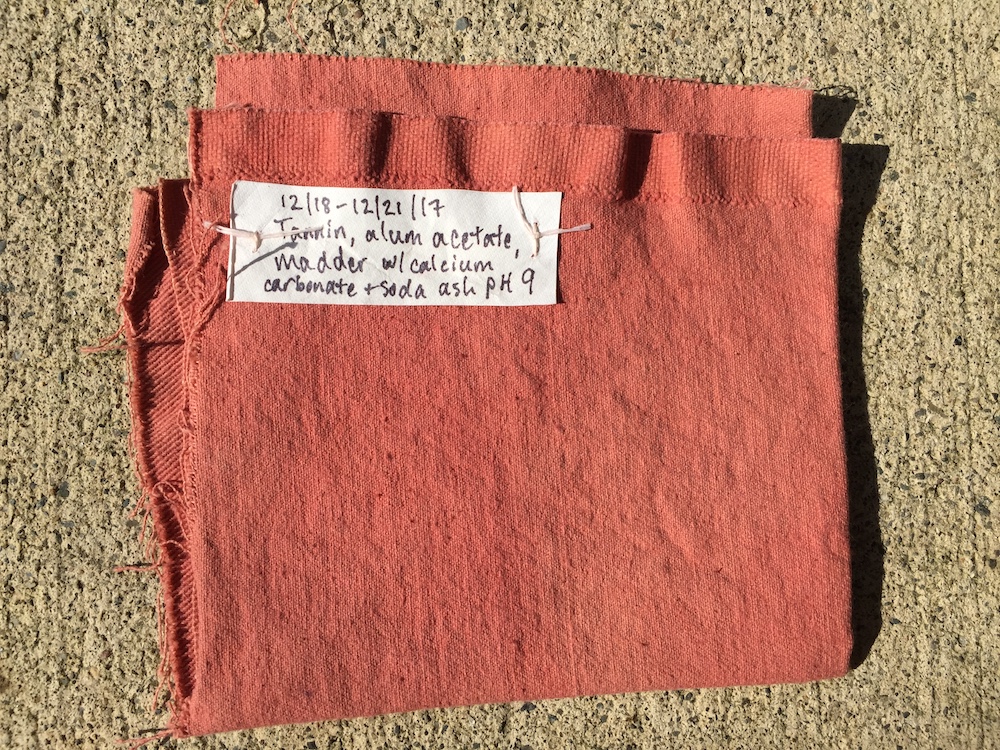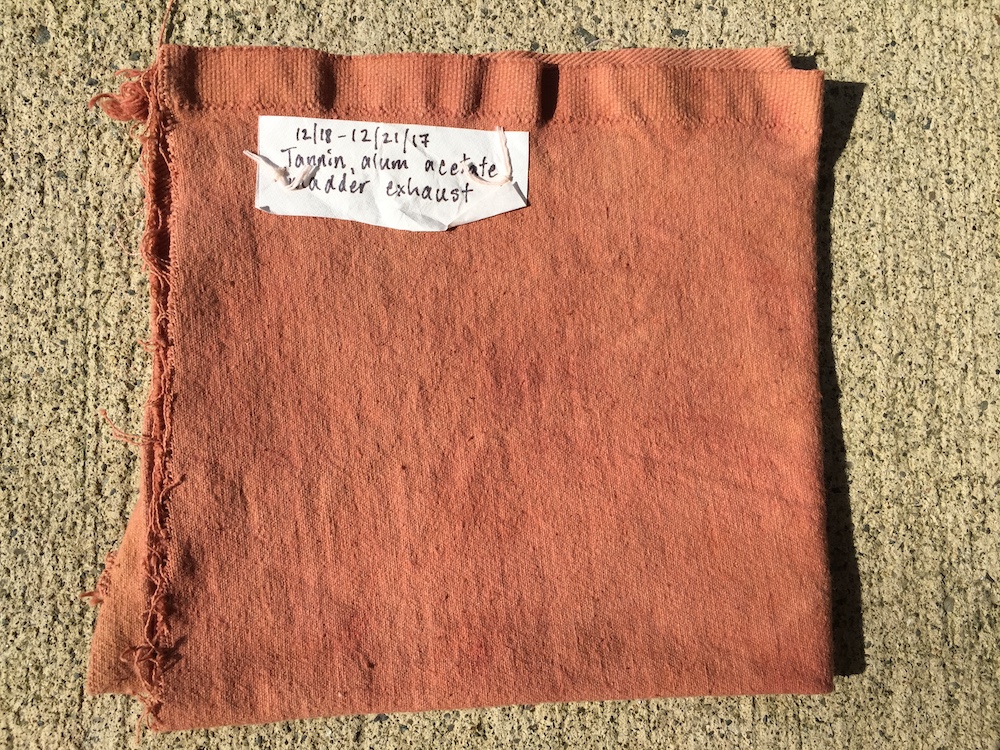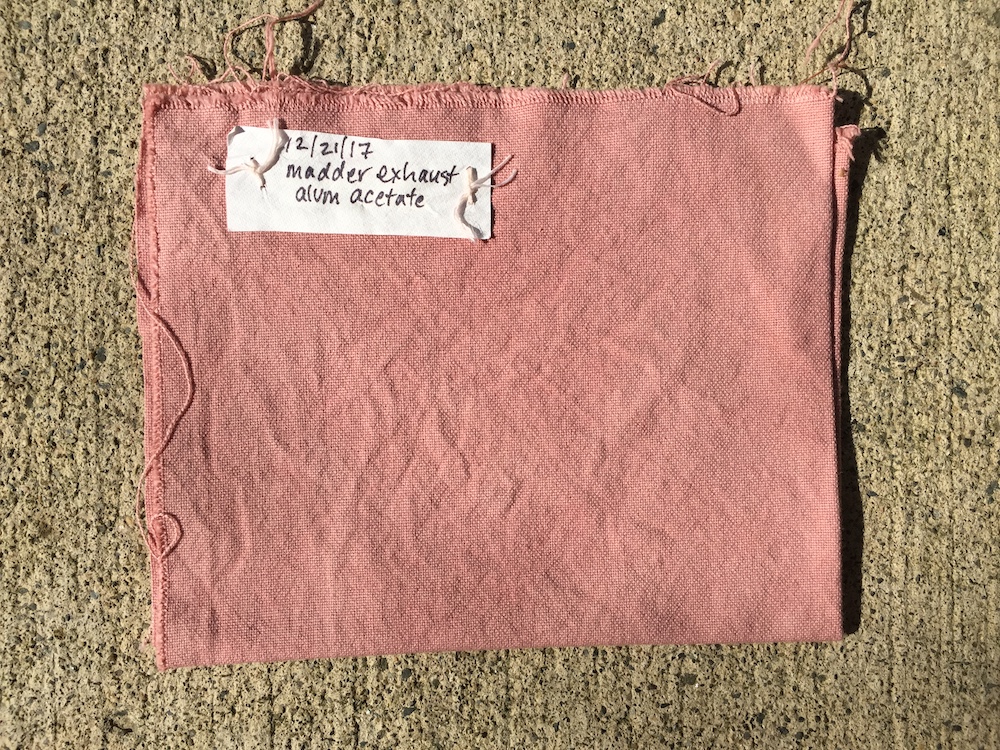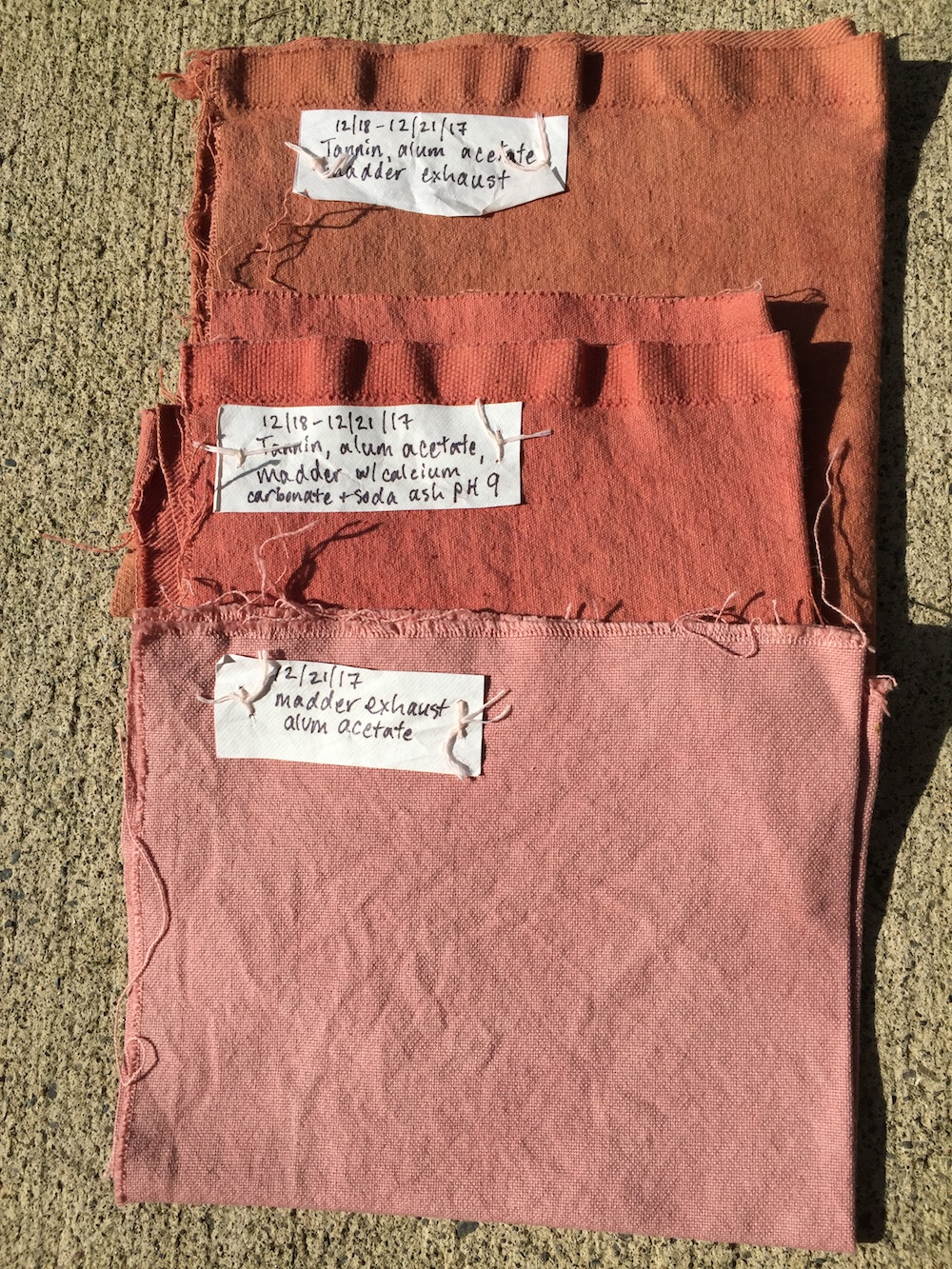If you read my post about the tannin-iron-madder experiment, you may have noticed that I divided the original dyebath in half. I didn’t explain why at the time. My rationale was this: I worried that the iron would affect the subsequent colors I got from the exhausted dyebath.
For the rest of the experiment, I prepared small pieces of cotton cloth with three different treatments, which I’ll describe below.
You can read my original post here for a description of how I made the madder dyebath and prepared the fiber.
Usually when I’m extracting madder roots, I use calcium carbonate and soda ash to make the water mineral-rich and alkaline. The soda ash is inspired by a comment by Rita Buchanan in A Weaver’s Garden that “the pigment alizarin dissolves better in alkaline solutions.” In Jim Liles’ recipe for “Amish Madder Purple” he directs you to use calcium or chalk in the dyebath (though he specifies calcium acetate). He doesn’t mention pH, so for that sample I didn’t mess with the pH (which was 7).
However, in the other half of the madder bath, I added a half teaspoon of calcium carbonate *plus* a teaspoon of soda ash, which brought the pH up to 9. The bath got noticeably pinker.
Here’s the first sample from this dyebath. You can see that it has a bright pink quality. It’s cheery but also earthy, and I like it a lot:
When I’m working with madder, I try to keep the temperature below 160 degrees F. I have read some recipes that call for strategically manipulating the temperature higher than that, and even boiling for a limited period of time, but I haven’t tried them. So, in this case I kept the temperature below 160, maintained it for an hour, and let the fiber cool in the bath overnight.
Then I combined the two dyebaths and added the next sample. The sample below was tannin, alum acetate, and madder exhaust. I didn’t add any soda ash to bump up the pH, nor did I test it. To my eye, it’s more orange-brown than the first sample.
Lastly, I put in a piece of cloth that was not treated with tannin. This was a thick 100% cotton plain-weave piece. It was scoured, mordanted with alum acetate (along with the other aluminum acetate pieces I’ve described in this series of posts), and then dyed.
As I mentioned at the very beginning of this series of posts, I have often found tannin to be a frustrating factor in my dye process. For many years I have used aluminum acetate by itself without tannin when I’m dyeing cellulose fibers. This is the kind of clear, bright pink that I’m used to from a madder exhaust:
Here are the last three madder samples stacked up together:
Here is the full set of samples I made that week (December 18th-21st, 2017):
After all these experiments, I am:
- Excited about the possibilities of tannin to extend the range of colors I can get on cellulose fibers.
- Excited about trying alternate recipes for mordanting cellulose that I came across while researching these topics, including Maiwa’s processes for mordanting cellulose fibers as described here. (12/31/2023 Edited to link to their new website.)
- Less inclined to think of cotton as my dyeing nemesis, with the caveat that…
- For cellulose fibers, I still love linen more!

